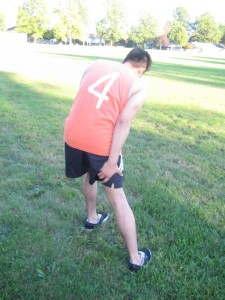The thighbone or femur is the longest and sturdiest bone in the body. Since it is a durable bone, it requires substantial force to break it. Vehicular accidents are one of the usual causes of a broken thighbone. The long, straight part of the thighbone is the femoral shaft. Once there is a break on any part of this length, it is called a broken thighbone.
Types of femoral shaft fractures
When it comes to femoral shaft fractures, they vary greatly and depend on the force that causes the break. The bony pieces can line up correctly or out of alignment. In some cases, the fracture can be closed or open. The usual forms of femoral shaft fractures include the following:
- Transverse fracture involves a straight line that goes transversely the femoral shaft
- Oblique fracture has an angled line across the shaft
- Spiral fracture involves a fracture line that encircles the shaft
- Comminuted fracture involves the breaking of bones into three or more pieces
- Open fracture occurs when a bone breaks in a way that the bone fragments stick out through the skin
Possible causes

The femoral shaft fractures among young individuals are caused by high-velocity collision, usually during a vehicular accident. Being hit by a vehicle is another cause as well as falling from a height and even gunshot wounds. The elderly can sustain a femoral shaft fracture from a fall from standing.
Symptoms
A femoral shaft fracture typically causes immediate and intense pain. The individual could not place weight on the injured leg and it appears deformed. In most cases, the affected leg is shorter than the other leg and no longer straight in appearance.
Diagnosing the injury
The doctor will ask if the individual was involved in a vehicular accident. The information will be used to determine if there is indeed an injury or on another part of the body.
After discussing the injury and medical history, the doctor will perform a physical examination to assess the overall status and then focus on the affected leg. The doctor will check for any breaks in the skin, obvious deformity, bruises and bony pieces that might protrude out of the skin.
The doctor will palpate the thigh, leg and foot for any abnormalities as well as checking the tightness of the skin and muscles. In addition, pulses are also checked.
The imaging tests that might be required include an X-ray and CT scan. An X-ray can reveal if there is a fracture and its exact location. As for the CT scan, it shows a cross-sectional image of the affected limb.
Treatment
Most cases of femoral shaft fractures need surgery in order to heal properly. Remember that it is uncommon for the fractures to be managed without surgery. Young children are oftentimes managed with a cast. To learn to recognize and manage bone and muscle injuries, sign up for first aid training with Red Deer first aid today.
